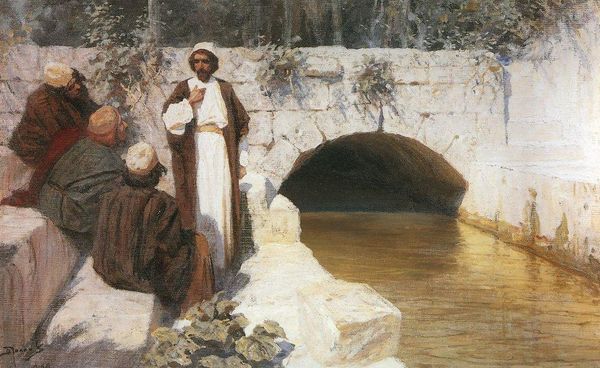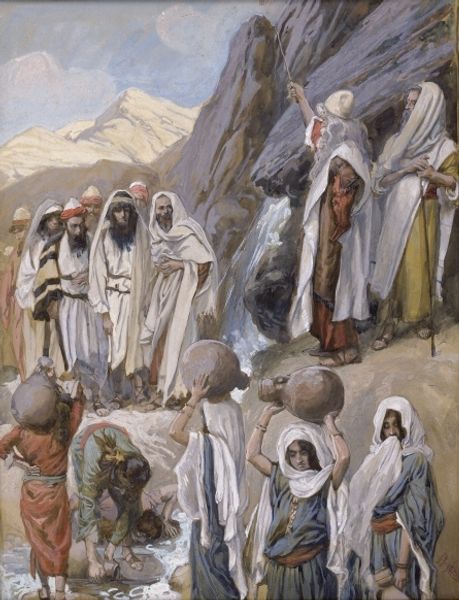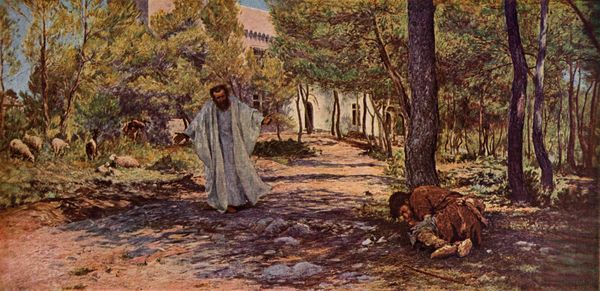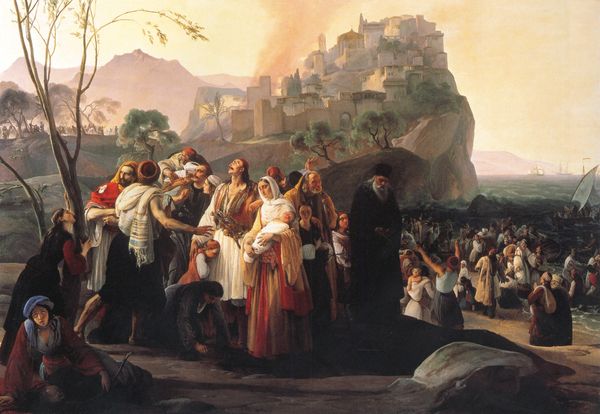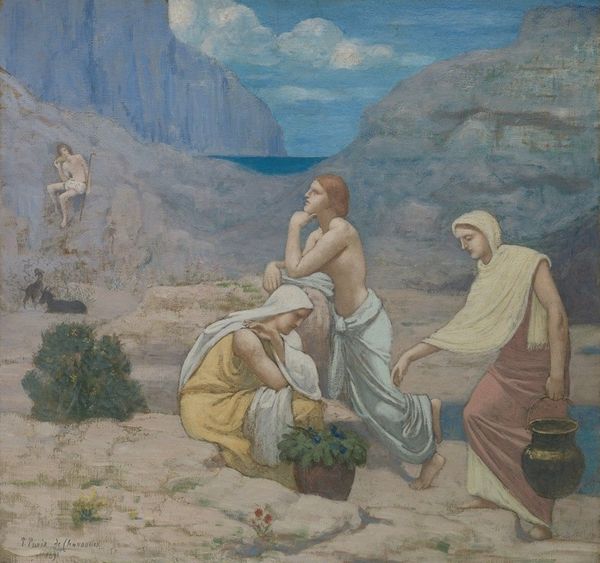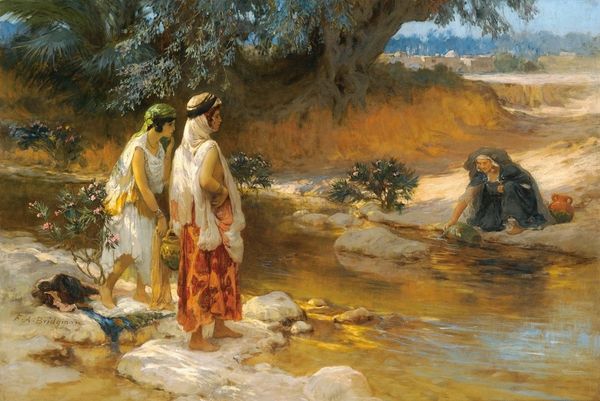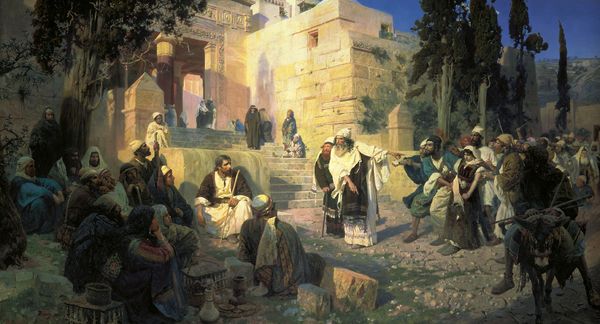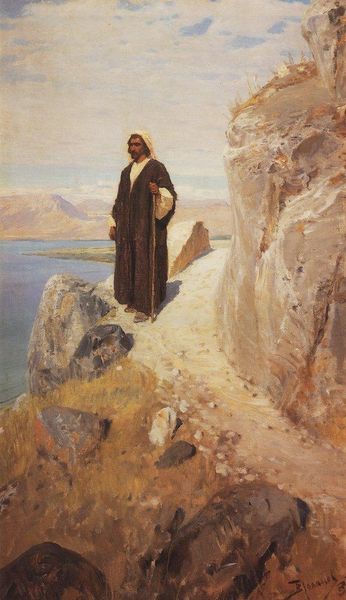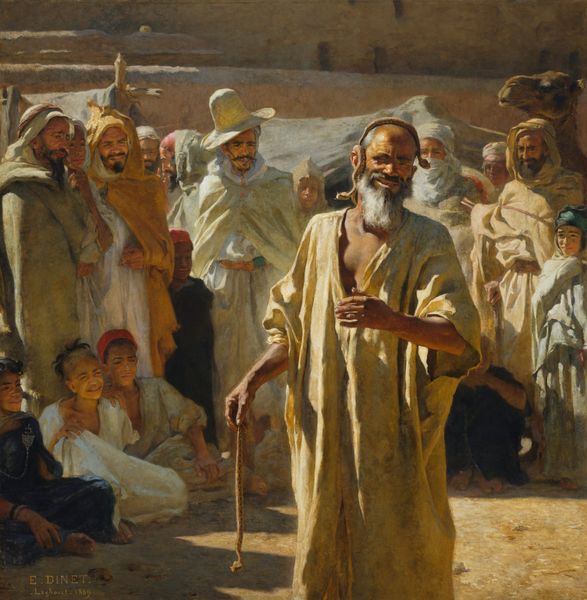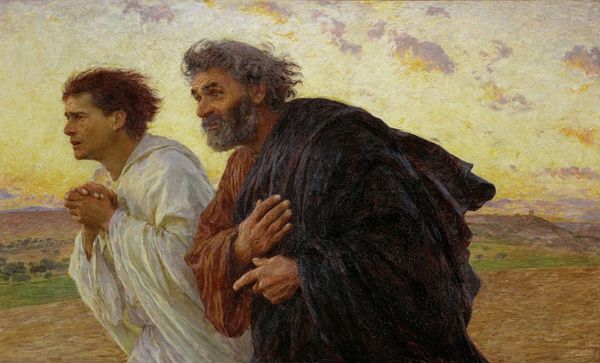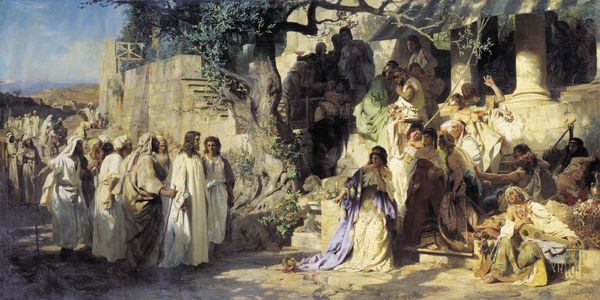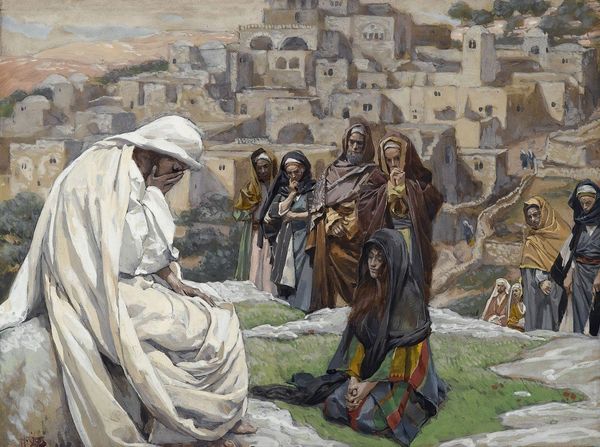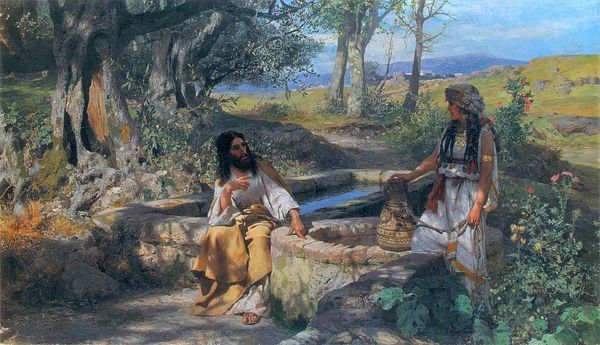
Copyright: Public domain
Curator: Vasily Polenov painted "We decided to go to Jerusalem" in 1900. Editor: It’s incredibly serene, almost dreamlike. The muted tones and soft brushstrokes give the impression of looking at a memory rather than a solid depiction. Curator: Polenov, a Russian artist, traveled extensively in the Middle East and dedicated a large part of his oeuvre to biblical scenes. He sought to represent these narratives authentically and historically, aiming to depict the world as Jesus and his disciples might have known it. The painting, an oil on canvas, is clearly rooted in the artistic and social debates about religion at the turn of the century. Editor: Right. The appeal here seems to be less about grand religious declaration and more about depicting a specific place, a tangible route. The material reality is front and center. Look at the layered textures of the clothing. Even the multiple cart paths imply human construction impacting the land. It gives the composition a wonderful weight. Curator: The depiction of Jesus, or perhaps a disciple, and his companion walking along the shores of what is likely the Sea of Galilee reinforces that very accessibility. Polenov sought to counter the established grand narratives and instead provide a more humanist, relatable Jesus, firmly located in a particular time and space. It was a challenge to established power. Editor: So, a sort of anti-establishment stance painted with the materials of the established Romantic landscape tradition. But look closely at the ground. The marks of labor show not some divine path, but rather the simple act of working a route that others had also created. It emphasizes shared social structures. Curator: And it made these profound religious themes available to the public, contributing to a democratizing impulse. Polenov situated these biblical figures within familiar landscapes and human-scale activities to further accessibility. Editor: It does force one to consider faith, not in the abstract, but tied inextricably to specific locations, garments, and paths forged with labor. Curator: Seeing this today prompts me to rethink how powerful cultural shifts get translated into visual form. Editor: For me, I am thinking about the very hands that prepared the oil paint, stretched the canvas, and wore those tunics. Their reality and labor feel woven into this piece, just as much as the religious story.
Comments
No comments
Be the first to comment and join the conversation on the ultimate creative platform.
